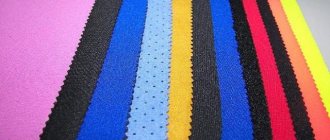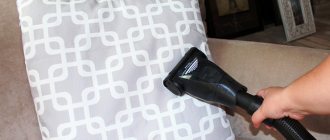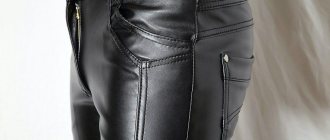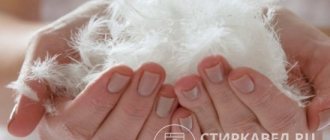Nothing warms you up in the cold season like fur products. A beautiful fur coat creates a unique feeling of comfort, gives you self-confidence and attracts the attention of passers-by. Like any other clothing, it loses its outer luster over time, accumulating dust and other contaminants.
You can restore the original purity of fur not only in dry cleaning, but also at home. There are a number of recommendations for cleaning, washing and drying the product that will help remove dirt efficiently and not damage the precious fur.
Basic washing rules
A fur coat, especially from the skins of sable, astrakhan fur, chinchilla and ermine, is quite an expensive pleasure. It requires special storage and cleaning conditions.
There are dry cleaning methods adapted for specific types of fur:
- Mink. A solution of 9% vinegar, ethyl alcohol and water in equal parts is carefully applied with a brush in the direction of hair growth. The product is then wiped dry with a clean cloth. This method can be used to clean nutria and rabbit skins.
- The fur of muskrats, squirrels and seals can be cleaned with sand. To do this, the sand is washed well, then heated strongly and the contaminated areas are thoroughly sprinkled with it. If necessary, the procedure can be repeated. At the end, the product is shaken out well.
- Raccoon. An aqueous solution of salt and ethyl alcohol, in proportions of three to one per 500 grams of water, is applied to the dirt with a cotton pad. A clean product is wiped with a damp cloth.
- A wolf fur coat can be cleaned with a solution of alcohol and vinegar, similar to a mink.
- Arctic fox and light-colored sheepskin are cleaned with hot bran. They are heated in the microwave, carefully sprinkled onto the dirt and left to cool. Next, the remains are combed out with a brush.
Gasoline and starch, mixed to a paste, will remove difficult stains. But black and dark fur should not be cleaned this way.
Cleaning with animal shampoo will be universal; you can buy it at a pet store.
Dust and atmospheric pollution can be removed by laying the fur coat on a wet terry towel and gently tapping it.
Cleaning a fur coat
Light stains can be removed using the following dry cleaning methods. In case of loss of shine of the fur, noticeable dust and dirt in the down, and extensive stains, washing cannot be done without the help of washing.
There are a number of rules that, if followed, will help you wash a product without unpleasant consequences:
- Before starting cleaning procedures, be sure to test the product on an inconspicuous area;
- it is necessary to study the information on the label; perhaps the product should not be wetted;
- the water temperature during washing should not exceed forty degrees;
- Machine washable only for artificial fibers;
- Gels are recommended as detergents;
- during the cleaning process, it is necessary to carefully comb the pile, without active friction;
Having taken into account all the rules and tips, you can proceed directly to washing the product. Natural products need to be washed exclusively by hand; artificial ones can be washed in a machine.
ARTICLE FOR YOU
How to properly wash a wedding dress: in the washing machine and by hand
Dry cleaning
With its help you can cope with minor stains. The procedure is quite simple. First you need to knock the dust out of the fur. After manual cleaning, you can use a vacuum cleaner. To avoid damaging the fur, be sure to attach an attachment for upholstered furniture to the device.
To choose the most suitable method, it is necessary to determine the type of fur. The process of refreshing the appearance of products made from arctic fox and rabbit fur is the same. The same can be said about high-quality faux fur. If the stains do not disappear after dry cleaning, you need to turn to more effective methods.
Handwash
To wash a fur coat by hand you will need a large volume of water and a container. The easiest way to do this is in the bathroom. It must be filled with water, the temperature of which is 30-35 degrees.
If overheated, the size of the fur coat may decrease by a couple of points, and the fur itself may harden and lose its shape. Dilute the detergent in water in proportions according to the instructions.
Hand washing a fur coat
The washing itself takes place in several stages:
- The product is laid out in the bathroom as far as its size allows. After lying in the water for 15 minutes, the pile and undercoat will be well saturated with soapy water.
- The collar area, sleeves and elbows, pockets and cuffs are usually the most problematic areas of the product. They can be carefully treated with a soft brush or sponge, combing in the direction of hair growth.
- To remove dirt from the undercoat, you can lightly knead the fur with your hands, without friction or unnecessary effort.
- The soapy water must be drained, and the remaining water must be removed with stroking movements.
- Rinse any remaining detergent thoroughly with plenty of warm water. Repeat the rinsing procedure several times to ensure that no soap streaks are left.
- To make the coat silky and shiny, leave the fur coat in cool water for ten minutes.
- After draining the remaining water, excess moisture is removed from the product using pressing movements. If possible, the fur coat is laid out horizontally on slats or planks, which allows the water to drain on its own. Thus, the product will not lose its shape. Squeezing with twisting movements is strictly prohibited.
After the water has drained, the product is combed well and dried.
How to wash faux fur items
Products made from synthetic fur are hand washed in the same way as items made from natural materials. Machine washing on a delicate cycle is also allowed, but only if the length of the pile does not exceed three to four centimeters. You can dry clothes in the standard way - on a horizontal surface, on a terry towel, in a well-ventilated room.
Machine washable
You can machine wash a fur coat only if it is artificial. Before washing, you must read the instructions on the label; machine washing may be contraindicated. Washing items with long pile will cause difficulty. Drying and combing it after automatic washing will not be easy at all.
Washing in a washing machine
In all other cases, you don’t have to worry about the safety of your favorite item if you adhere to certain rules:
- When choosing a washing mode, you should choose a delicate wash or for woolen items. The temperature should correspond to the instructions on the label, as a rule, it rarely exceeds forty degrees.
- The product is rolled up and packed in a laundry bag. This will preserve the integrity of the fur coat and prevent the machine from becoming clogged with lint. You can vacuum the fur coat first.
- As a detergent, you can use special gels for fur products or low-foam shampoos for animals.
- It is recommended to use a conditioner for synthetic items with an antistatic effect.
- Additional rinsing will be required.
- It is recommended to turn off the spin or use it at minimum speed. Automatic drying is strictly prohibited.
- After washing, the fur coat is laid out on a large towel, which allows you to remove excess moisture.
The washed product is carefully combed and dried in a vertical position.
ARTICLE FOR YOU
How to properly wash bathroom curtains: in the washing machine and by hand, removing yellow stains and mold
Processing a fixed collar
If the specified part cannot be separated, when choosing a washing method, you will have to take into account the material from which the jacket is made. If you are not sure about the safety of the fur, you should take the down jacket to the dry cleaner. There is another option: you need to wash your outerwear in a machine using tennis balls. This method has caused a lot of controversy. Acceptable washing methods are usually indicated on the jacket label. All the necessary data is indicated there.
We recommend:
How to clean a sheepskin coat from stains at home
Combing rules
Methods for combing fur depend on its length. Lush or short pile is combed from the bottom up, lifting the villi and giving them additional “fluffiness”. In this way, fox fur and marten skins are combed.
Smoothed pile, like that of a mink or lynx, is combed with movements from top to bottom, smoothing the hairs.
Combing a fur coat
The rest of the combing process comes down to one algorithm of actions:
- You need to start combing from the bottom of the product, gradually rising to the collar area. The fur is gradually combed in small sections.
- Tangles and wool woven together must be carefully untangled by hand. Intense movements of the comb will only harm the skins, tearing out the fur and damaging the base.
- When choosing a comb, you should choose combs made of wood or metal with infrequent teeth. There are also special brushes for fur, they are sold in fur stores.
- Do not scratch too deeply; the brush should not get into the flesh.
- The most problematic areas of outerwear are the collar, cuffs and pocket area. They need to be given special attention.
- At the end of the work, the fur is smoothed by hand. The exception is fluffy skins, for example, badger fur.
Before you start combing, you need to remove all dust from your fur coat. To do this, you need to shake it or knock it out.
Features of cleaning natural fur of different animals
It is easy to check the degree of contamination of the product yourself. Turn on the hair dryer and direct the air currents to the pile. If it scatters, returns to its original position, and has the same shine, the material is clean. A greasy, sticky item must be washed.
The method for removing stains from fur is selected taking into account the type of material:
- Products made from mink and silver fox are washed using a dry or wet method. For minor stains, apply talc with a sponge, leave for a few minutes, and comb out the fur with a brush. A solution of equal amounts of vinegar and medical alcohol is used. The product is removed with a dry cloth.
- To wash the Arctic fox, use a composition of 1 tbsp. l. ammonia, 1 liter of water. Dip a rag in the solution and touch the stains with it without rubbing. If the pile has turned yellow, it is cleaned with hydrogen peroxide.
- Oat and wheat bran quickly remove dirt from fox fur. Heat the product in a frying pan, spread the clothes on a flat surface, and pour the grains on top. The method effectively cleans the item without washing. Use a brush to go over the pile well, remove any solid residue with a vacuum cleaner, and shake several times.
Detergents
Fur salons, in addition to their main products, often offer fur care products. Professional cosmetics for fur coats will allow you to easily remove dust and atmospheric and soil pollution.
Using cleaning products, you can remove difficult stains, such as traces of foundation or de-icing agents, without affecting your valuable fur.
Natural fur should be regularly treated with antistatic and moth repellent.
Those who decide to wash a product at home should pay attention to cleaning gels and solutions adapted for a specific type of fur.
Detergents
Tips from the experts
Experts in the field of caring for fur products give several recommendations that will help you carry out the cleaning procedure effectively and safely:
- Never use dry washing powders for washing. It is also prohibited to use any household or homemade stain removers or bleaches.
- Never twist wet fur items, as this will harm both the fur and the lint.
- Fur should not be dried in direct sunlight or near heating appliances.
Well, the last recommendation is that fur should never be ironed, even from the inside out, so you should not do this either.
Whitening
Over time, light-colored fur items may become unpleasantly yellow. You can take these items to the dry cleaner or use at-home bleaching methods:
- Potato starch or talc is poured over the entire surface of the fur coat for half an hour. The product is first laid out to evenly apply the powder. After time, the fur coat is shaken out and combed.
- A solution of table vinegar and citric acid is applied to the wool using a cotton pad. To distribute the active components throughout the pile, it is combed and left to dry.
- An aqueous solution of hydrogen peroxide and ammonia (a few drops per glass of water) is applied using a spray gun and the pile is treated with a brush.
- Crushed to a powder, a piece of chalk is poured onto the yellowed areas for thirty minutes. Next, shake the fur coat to remove any residue.
With the help of quite affordable means, you can restore the cleanliness and freshness of fur items. It is preferable to entrust the removal of heavy or large-area stains on expensive products to specialists.
We use gentle cleaning methods
Try washing your fur coat without soaking. Dust it out and vacuum it with the upholstery attachment.
Assess the “volume of disaster.” Mark the areas that need cleaning. If the contamination is not significant, then try cleaning them with clean water. Hang the fur coat on a hanger, pour a bowl of water at a temperature no higher than 30 degrees. Take a suede brush and wet it with water to clean the fur. After this, comb the fur and let it dry. Once dry, comb again. As a rule, this is enough to restore shine.
Some advise doing virtually the same procedure, but with snow. This is even better, since less excess moisture will be absorbed. If there are clean snowdrifts on the street, then wipe the fur with snow, but not too much. There is no need to press or knead. Next, comb and dry.
But if these methods do not help to wash old stains or remove the smell that has been absorbed over the years, then contact the dry cleaner. They know how to wash a mink coat, they will quickly put it in order without damage. If for some reason the services of professionals are not available to you, and you are ready to risk a fur item, then go ahead and try washing it yourself. Let's look at how to do this.
Drying
Improper drying of a fur item can lead to the formation of creases, roughening and loss of shape. A few tips will help you avoid this:
- do not dry fur in close proximity to a heat source, primarily meaning radiators and heating devices;
- do not use a hairdryer, hot air contributes to the hardening of the inner skin;
- before drying, blot the fur with a terry towel to remove excess water;
- the wet product is hung vertically on a wide hanger and all folds are straightened to prevent creases;
- The drying room must have good ventilation;
- Do not dry your fur coat in direct sunlight or in a draft.
ARTICLE FOR YOU
How to wash Pavloposad scarves: wool and silk in a washing machine and by hand
After the fur coat is completely dry, shake it and begin combing the fur.
How to dry
This is perhaps the most difficult thing. A wet fur coat weighs a LOT. Few hangers can handle that kind of weight. You can do the following: place a bath seat (if you have one) and lay the wet item on it. Instead of a seat, you can use any two boards.
When most of the water has drained (after about 3-5 hours), place a chair with a back in the bathroom, hang the fur coat on it, trying to straighten it as much as possible. So leave it to dry for 8 hours.
When the fur dries, you can try to comb it with a regular wooden or plastic hair brush. Do not scratch wet areas, as you may tear out the down.
After the fur has completely dried, comb it again and proceed to the most important thing - fitting. That's all!
Caring for the flesh
After drying the product, you can think about caring for the inner layer, the layer of animal skin. After washing and drying, the mesh may lose its elasticity and needs some treatment at least once every two years.
Caring for the flesh
There are several effective methods for restoring tissue at home:
- Dissolve a tablespoon of salt and a tablespoon of vinegar in one liter of water. Using a sponge or cotton pad, apply the product to the inner surface of the fur. The procedure must be repeated several times at intervals of two or three hours. Next, the fur is dried well.
- Mix oil and table vinegar in a ratio of two to one. Use a cotton pad to rub the resulting solution into the skin. You can use flaxseed, apricot or olive oil. It is also possible to use glycerin diluted with water. The oil solution will be absorbed for at least three days, and during this time it is not recommended to wear the product.
You can get to the inner layer of fur by slightly pushing back the lining from below. In some models it is not sewn intentionally.
How to clean natural fur from yellowness
Over time, the fur on the product may turn yellow. This does not make the item more attractive, so many owners of fur clothing try to return the pile to its natural color. This can be done using a product that is prepared according to a simple recipe - mix one tablespoon of ordinary table salt and half a tablespoon of ammonia in half a glass of water (we work in a respirator so that the smell of ammonia does not irritate). Then take a soft cloth, preferably white cotton, dip it in the solution and wring it well, it should remain barely damp. We wipe the fur with a cloth, especially carefully treating the yellowed areas. This way we remove greasy contaminants that give the fur an unsightly tint. After this, shake the fur product, straighten the fibers, and leave to dry.
Is synthetic fiber washable?
Items with short and dense pile can be machine washed
How to wash faux fur without damaging the synthetic fibers? Items with short and dense pile can be machine washed. You can wash and clean synthetics at home in different ways. Much depends on the manufacturing technology of the items, the volume of the item and the nature of the contamination. For example, it makes no sense to wash a faux fur coat completely if a couple of drops of oil get on the sleeve or back.
During any method of processing fur products, the following rules should be observed:
- Synthetic pile tolerates high humidity, low temperature and drying with cold air without significant problems.
- Minimal damage will appear even with low heat in the form of dullness and hardness of the pile. You should always give preference to dry and wet cleaning. This is faster, safer and cleans the product no worse than classic washing.
- Dry cleaning can only be used after reading the instructions or label on the product.
- Do not dry near central heating radiators, on electric dryers or on a balcony under direct sunlight.
- Before using fur clothing, make sure it is completely dry. If the product is very disheveled and wrinkled, then it is smoothed with a damp hand and combed with a soft sponge.
- Fur garments may turn yellow or lose their whiteness due to improper washing. The use of aggressive detergents and bleaches also leads to disruption of the structure of synthetic materials and loss of consumer properties.
- The best way to preserve a fur coat and other items made of faux fur in its original form is periodic and timely cleaning, regular care and compliance with the storage conditions of the product.
- The best way to preserve a fur coat and other items made of faux fur in its original form is periodic and timely cleaning, regular care and compliance with the storage conditions of the product.
How to wash faux fur in a machine?
Timely cleaning and care prevents you from washing the product too often
Cleaning fur items in a washing machine is necessary in cases where a large surface of the product is contaminated, and is only possible with the recommendations and permission of the manufacturer. If there are no corresponding markings on the manufacturer's label, then it cannot be washed.
Do you wash faux fur in the washing machine?
Important: machine washing is best used for items with short and very dense pile. Otherwise, instead of a clean and noticeably refreshed item, you risk getting something dull, shaggy and very vaguely reminiscent of the previous product.
Before washing, you should carefully inspect the item for difficult stains, check pockets and the presence of decorative decorations. If there are old stains that have penetrated deeply into the material, they can be treated with oxygen bleach, soda or a solution of ammonia. When using bleach, first test the composition on a small area and see how the fur reacts to such a substance, only then apply to the dirty area. Read below about cleaning with natural absorbents.
The machine washing process in AFM will look like this:
- A fur coat, sheepskin coat or fur hat should be carefully turned inside out. If it is a collar on a down jacket, then you need to unfasten it from the item, or better yet, put it aside and clean it by hand.
- The product is placed in the washing machine. It is recommended to use only neutral or gentle powders in liquid form. You can use compositions for washing children's clothes.
- First, set the pre-soak mode for 15-20 minutes. If such a function is missing, then the item can be soaked in advance. To do this, use a small basin and cold water.
- After soaking, use the “rinse”, “gentle or delicate wash” mode. It is advisable to set the washing time to the minimum possible. It is better to turn off the spin and set it to the minimum number of revolutions.
- Once cleaning is complete, open the drum and allow the excess water to drain. You can take out the product and gently squeeze it with your hands in the bathroom or over the basin. Do not twist, squeeze or deform the fur under any circumstances.
Will spinning in the washing machine hurt?
Manufacturers in most cases do not prohibit spinning faux fur in the washing machine. However, this must be done using the minimum speed of the centrifuge, since high speeds can cause deformation and destruction of the base of the product, as a result of which the pile will come out.
How is it recommended to dry?
- We dry in natural conditions
- The optimal drying method is drying at room temperature or in the fresh air in cloudy weather.
- We spread it on a horizontal surface, preferably on a horizontal dryer for free access of air.
- If possible, dry in the open air; if this is not possible, then in a well-ventilated area.
- It is advisable to constantly shake the product while it is wet.
- It is not recommended to dry fur items in the sun and use heating devices and radiators.
- Most manufacturers prohibit drying clothes with faux fur in the washing machine on the dry setting.
- After complete drying, you can comb the pile with a massage comb.
Why does lint appear in the washing machine after washing?
- The wrong temperature setting was selected. Wash with cold water or at minimum temperature +40
- The pre-soak time has been exceeded. Over 15-20 minutes.
- Wrong washing mode selected. After soaking, you need to turn it on for rinsing, or set the minimum washing time.
- The thing was rubbing against the drum. You should use a bag for washing delicate laundry.
- Failure to maintain spin speed. No higher than 400 rpm. min.
- Wrong detergents have been selected. The “drying” mode was selected. Not recommended in an automatic car.
Fur hand washing process
Hand washing faux fur is more preferable, since it allows you not to wash the product completely, but to carry out only local cleaning or washing of a separate area. This is especially true for things with lush and long pile.
Before washing, as in the previous case, we inspect the fur for contamination. If the affected area is small, then it is better to perform local washing. For items that have not undergone any cleaning for a long time, washing with pre-soaking is better.
The sequence of hand washing is as follows:
- Local cleaning is performed using a soft sponge or cotton swabs. To do this, wet the stain or dirt with cold water. Next, apply detergent and gently foam. Then leave it for 2-3 minutes and remove it with a sponge. You can gently rinse the area from the shower.
- If a full wash is required, you will need to thoroughly clean the bathroom and fill it with some cold or cool water. First, a small amount of liquid is dissolved, and only then the product is immersed. Large items - a fur coat, sheepskin coat, faux fur blanket - can be soaked for 15-20 minutes.
- Next, you will need to wash all heavily soiled areas - cuffs, sleeves, and the area around the collar. This can only be done with your hands using a rinsing-like motion. That is, the fur cannot be rubbed or deformed too much. You just need to “fluff” it a little with your hand and let the soapy water rinse the pile.
- Use lukewarm water to rinse the detergent. Then rinse well in cold water until the water runs clear. It is more convenient to use a shower with a watering can.
To more effectively remove remaining water from a fur coat and other large items, you will need to take two large white terry towels. Next, you will need to place the product between the towels and lightly squeeze it with your hands. You can simply leave it in a horizontal position for 20 minutes.
What not to do with mink
Mink is a very delicate fur, so you need to handle it very carefully. When cleaning fur, there are certain taboos that you should adhere to.
It is strictly forbidden to perform the following actions with mink:
- Use washing powders or chemical cleaners. You can only use those that are specifically designed for fur.
- Dry things over a fire, heater, radiator or using a hairdryer. Temperature changes and dry air are harmful to fur and skin.
- Clean white fur coats with starch. This may produce yellow or blue streaks.
- Clean the fur with salt. This will dry it out and your skin. Because of this, the product may shrink and become stiff.
- Use an iron for drying or cleaning.
With proper care, a mink will last more than 10 years and will delight its owner and others with its elegant appearance.











